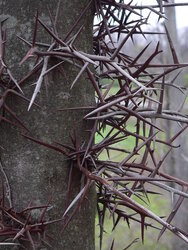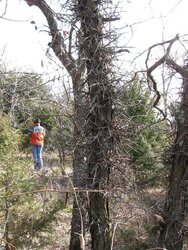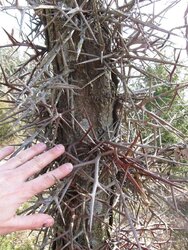I see mention quite often of people enjoying burning locust for firewood. Is this the honey locust tree? We have those in my locale and those suckers are bad boys with their thorns. We used to get flat tires in our tractors on the farm and that was not a good thing! If you guys cut locust trees with thorns, how do you do that? Look at this example, do you deal with this and if so, how?








